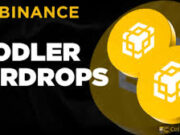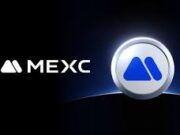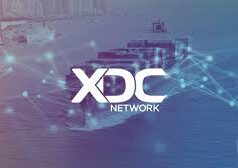SELFDESTRUCT on TRON
TRON’s developer community has put forward a significant change to the SELFDESTRUCT opcode under TIP‑6780, with the update slated for inclusion in the upcoming java‑tron v4.8.1 release. But these changes won’t immediately go live — they reflect a careful balancing act: improving security, reducing abuse, and aligning more closely with Ethereum’s standards.
Let’s break down what’s changing, how it could affect smart contracts, and what this means for the TRON ecosystem moving forward.
Understanding the Change: What Is TIP‑6780?
TIP‑6780 is a proposal made by TRON’s core developers that modifies how the SELFDESTRUCT opcode works. Historically, SELFDESTRUCT allowed a contract to destroy itself, delete all associated data (code, storage), and transfer its balance to a target address. Under the new rules, that behavior is constrained. (Medium)
The goal? Restrict full deletion of contract data to only when SELFDESTRUCT is called within the same transaction as the contract’s creation, and discourage misuse by increasing the energy cost from 0 to 5,000. (Medium)
Why TRON Is Making This Adjustment
There are several interlocking reasons for these changes, but broadly they fall into two major categories: security and compatibility.
1. Enhancing Network Security
By restricting SELFDESTRUCT’s most powerful behavior (deleting account code and storage) to only the creation transaction, TRON reduces the risk of unexpected or malicious contract destruction. (Medium)
The increase in energy cost (from 0 to 5,000) also raises the barrier to calling SELFDESTRUCT, making it more expensive and thus less likely to be used frivolously or in resource-draining attacks. (Medium)
2. Improving Ethereum Compatibility
TRON is aligning its behavior with Ethereum’s EIP‑6780, which introduced similar restrictions on SELFDESTRUCT. (Medium) This alignment helps make TRON more compatible with Ethereum-based tooling, developer patterns, and cross-chain infrastructure — a strategic move that could encourage greater interoperability and attract developers familiar with Ethereum’s model. (COINOTAG)
What Exactly Changes Under TIP‑6780
To be concrete, here’s how the behavior of SELFDESTRUCT will change under TIP‑6780:
- If SELFDESTRUCT is called in a different (later) transaction than contract creation:
- The contract execution halts immediately. (Medium)
- No data is deleted — the contract’s storage, code, and account remain intact. (Medium)
- However, any assets (TRX, staked TRX, TRC‑10 tokens) are transferred to the target address. (Medium)
- If the target address is the contract itself, those assets are not burned. (Medium)
- If SELFDESTRUCT is called in the same transaction as contract creation:
- Energy cost for SELFDESTRUCT is increased from 0 to 5,000. (Medium)
How These Changes Could Affect Developers
These are not superficial tweaks — they have real implications for how smart contracts are designed and maintained on TRON.
Disruption to Legacy Patterns
Some development patterns that heavily rely on SELFDESTRUCT may no longer work as intended:
- Upgradeable contracts via CREATE2 + SELFDESTRUCT: A common pattern for upgrading is to destroy an old contract and redeploy a new one at the same address. But since SELFDESTRUCT will only delete data within the same creation transaction, this upgrade mechanism breaks. (Medium)
- Data-wiping for security: Using SELFDESTRUCT to erase sensitive data at a later point is now limited unless that destruction happens in the same transaction as deployment. (Medium)
This means developers will have to rethink these patterns — moving toward more robust and predictable lifecycles, perhaps using alternative mechanisms for upgrades or cleaning up data.
Improved Predictability and Resilience
On the positive side, the restrictions make the behavior of SELFDESTRUCT more deterministic. That makes contract behavior more predictable, reduces hidden risks, and encourages safer and more maintainable design. Developers are nudged away from relying on an opcode that might be misused, and toward patterns with clearer reasoning and consequences.
Cross‑Chain Opportunities
With closer alignment to Ethereum’s EVM semantics, TRON becomes a more welcoming environment for developers who already build on Ethereum. It could foster the reuse of tools, libraries, and design patterns. That interoperability is likely to make TRON more attractive for cross-chain projects or for teams migrating or bridging Ethereum-based systems.
Impact on the Wider TRON Ecosystem
Beyond individual smart contracts, these changes ripple outward through the TRON ecosystem.
Strengthened Governance and Consensus
TIP‑6780 is a consensus-layer change, meaning it requires a hard fork to take effect. (Medium) That process involves network-wide coordination, and it reflects TRON’s willingness to evolve core protocol behavior in a deliberate way, rather than just patching vulnerabilities ad hoc.
Better Security Posture
By discouraging or limiting risky destruction behavior, TRON is improving its security posture. Misuse of SELFDESTRUCT could lead to resource exhaustion or even economic attacks; the update helps harden the network against such possibilities.
Alignment with Broader Web3 Trends
The change also positions TRON more clearly within the wider Web3 developer ecosystem. As blockchains increasingly emphasize cross-chain compatibility, aligning with Ethereum standards becomes a strategic advantage. It helps TRON attract more Ethereum-native talent, tooling, and integrations.
Low Disruption in Practice (Based on Usage Data)
Interestingly, the TRON core devs have analyzed on-chain data and found that almost all SELFDESTRUCT calls historically followed the “create-then-destroy-in-one-transaction” pattern — meaning the new behavior will not disrupt the vast majority of use cases. (Medium) That suggests this isn’t a radical change for existing contracts; in many cases, behavior stays the same, but the risk surface is greatly reduced.
When Will the Update Roll Out?
- The changes are slated to be released with java‑tron v4.8.1, the next major TRON mainnet upgrade. (Medium)
- That version, also called GreatVoyage‑v4.8.1 (“Democritus”), is now in final verification and expected around Q4 2025. (CryptoNews)
- But just because java‑tron v4.8.1 ships doesn’t mean these SELFDESTRUCT rules take effect immediately: they require activation via network governance voting. (Medium)
What Should Developers Do Right Now?
If you’re a developer building on TRON or planning to deploy smart contracts, here are several proactive steps to take:
- Audit your use of SELFDESTRUCT: Review existing contracts to see where and how SELFDESTRUCT is used. Evaluate whether any of your patterns depend on post-creation deletion or low-cost destruction.
- Refactor where needed: For any contracts relying on destructive upgrade patterns (e.g., CREATE2 + SELFDESTRUCT), consider refactoring to use upgradeable proxies or other mechanisms.
- Test extensively against v4.8.1: When java‑tron v4.8.1 becomes available (or in testnets when it’s deployed), test your contracts under the new SELFDESTRUCT behavior. Make sure they work as intended in both same-transaction and later-transaction scenarios.
- Engage in governance: Pay attention to TRON governance discussions around the activation of TIP‑6780. If you’re running a node or are otherwise active, your vote will affect when the change is live.
- Stay informed: Watch TRON’s official channels (e.g., TRON’s Medium, developer forums, TRONSCAN) for updates and technical clarifications. (Medium)
Wider Reflections: What This Means for TRON’s Future
This isn’t just a mechanical tweak. The TIP‑6780 change speaks to a more mature, thoughtful stage in TRON’s evolution — one where governance, developer experience, and interoperability matter deeply.
- Security-first mindset: By tightening SELFDESTRUCT, TRON is signaling that it takes protocol risk seriously. It’s not just about enabling power, but about limiting that power when it could cause harm.
- EVM alignment: Aligning features with Ethereum’s behavior is a long-term play. It lowers friction for cross-chain work and helps TRON tap into Ethereum’s massive developer base.
- Sustainable design patterns: Encouraging safer, more predictable contract design supports long-term growth of dApps, rather than quick hacks that rely on destructible contracts.
- Community empowerment: Because this is a consensus change, the community (developers, node operators, stakeholders) gets a real say. That democratic aspect strengthens the network.
Caveats and Risks to Watch
Even though this upgrade seems positive in many ways, it’s worth acknowledging some possible downsides or challenges.
- Backward-compatibility risk: Some legacy contracts may break or behave unexpectedly after the change. If SELFDESTRUCT calls depend on old behavior, refactoring might be non-trivial.
- Governance delay: Since activation depends on a vote, there’s potential for delay or disagreement. The community needs to coordinate to make this change live.
- Performance considerations: While increasing energy cost discourages abuse, it also makes legitimate SELFDESTRUCT calls more expensive. Developers must weigh that cost in use cases.
- Migration friction: For teams used to Ethereum patterns, there may be friction in migrating contracts or adapting to TRON’s slightly different runtime semantics — even as alignment improves.
Bringing It All Together
TRON’s TIP‑6780 update — restricting SELFDESTRUCT behavior and raising its energy cost — is a carefully designed shift. It reflects a mature, security-conscious community intent on aligning with Ethereum standards, while protecting the network from abuse.
For developers, the change suggests a move away from certain risky or transient patterns. But importantly, because the majority of SELFDESTRUCT usage already follows the “create‑and‑destroy in one transaction” model, disruption may be limited in practice. What’s more, the move opens up greater interoperability and predictability, which are hugely valuable for long-term growth and developer trust.
As we wait for java‑tron v4.8.1 (GreatVoyage‑v4.8.1) and the activation of TIP‑6780, now is a good time for TRON developers to audit, test, and prepare. Whether you’re building new contracts or maintaining existing ones, this is a moment to align with safer design practices, future-proof your code, and contribute to TRON’s evolution as a robust, Ethereum-compatible platform.
Sources:
- TRON Core Devs: TIP‑6780: Change to the SELFDESTRUCT Opcode (Medium)
- OKX Learn: TRON’s SELFDESTRUCT Upgrade (OKX)
- Coinotag News: TRON proposes SELFDESTRUCT upgrade aligned with Ethereum EIP‑6780 (COINOTAG)
- Odaily News: TRON v4.8.1 enters full verification (ODaily)
- Bitget News: Mainnet upgrade to GreatVoyage‑v4.8.1 (Bitget)
- Java‑tron documentation: Signature Verification for release integrity (tronprotocol.github.io)



























